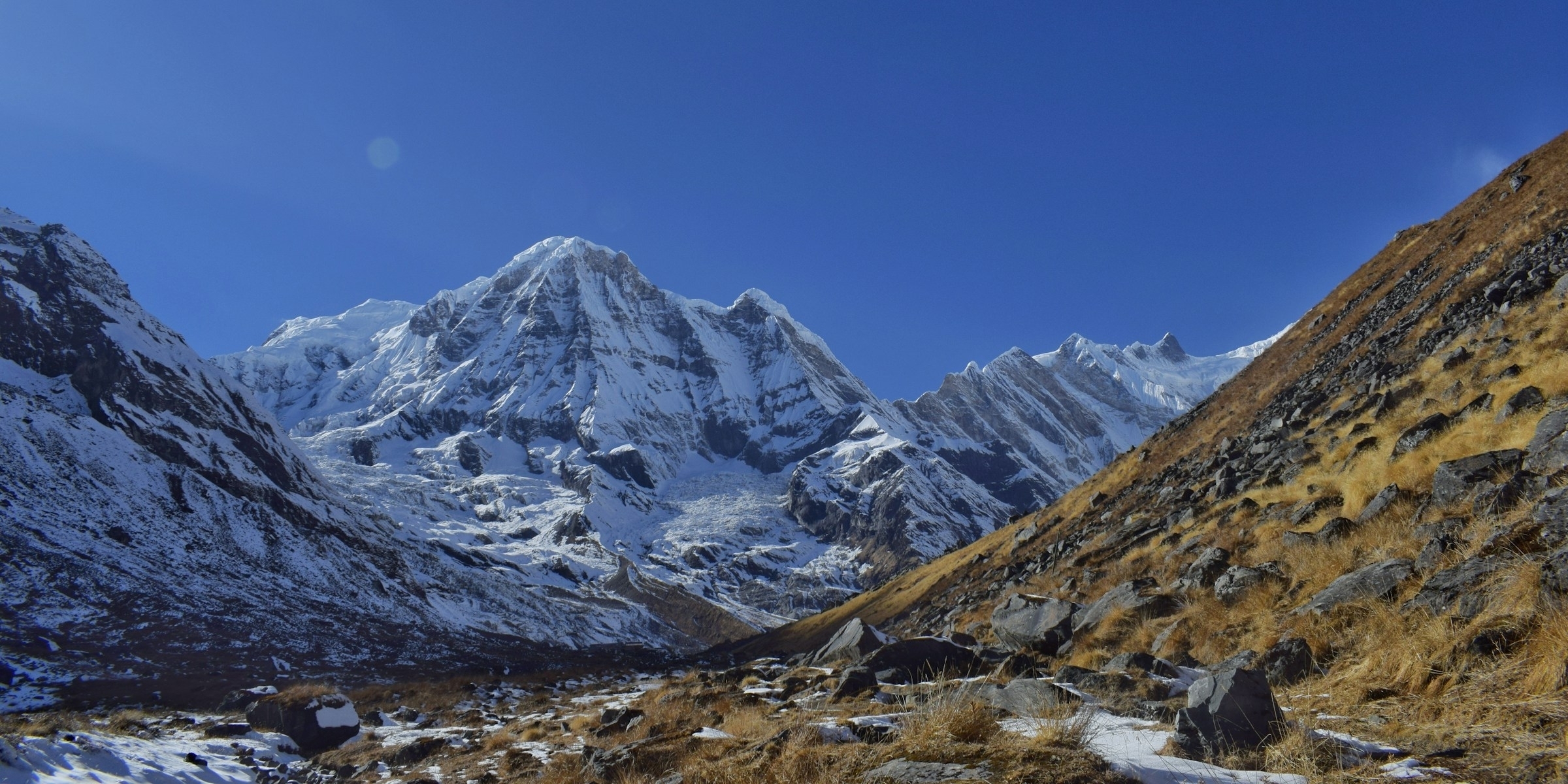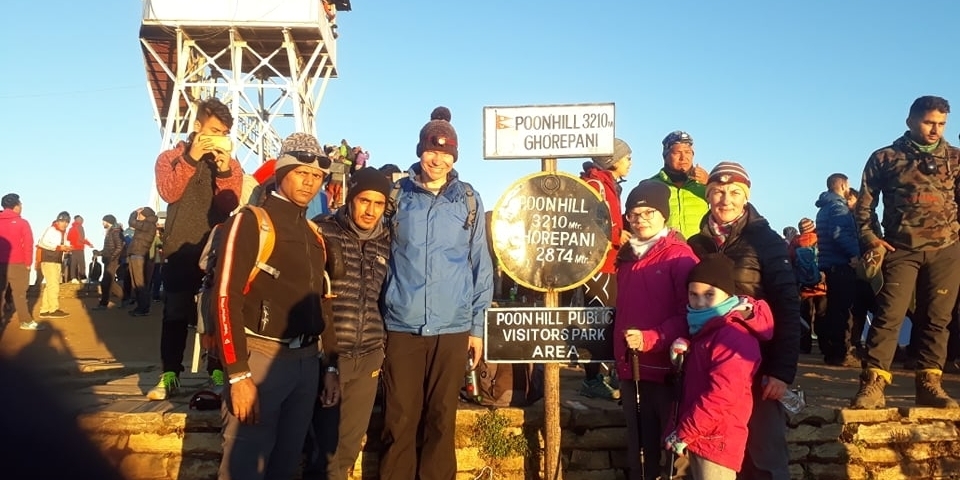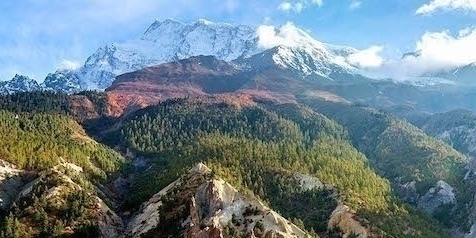Top 10 Trekking in Nepal
Nepal is a trekker's paradise, with its majestic mountain ranges, diverse landscapes, and rich cultural heritage. From the world-renowned Everest Base...


Annapurna Base Camp, often abbreviated as ABC, is a renowned trekking destination nestled in the heart of the Annapurna range of the Himalayas. Situated in Nepal, this trek offers adventurers an opportunity to immerse themselves in breathtaking landscapes, rich cultural experiences, and close encounters with nature.
View and Landscape
The panoramic views from Annapurna Base Camp are nothing short of breathtaking. Trekkers are treated to sweeping vistas of snow-capped peaks, including Annapurna South, Annapurna I, Hiunchuli, and Machhapuchhre (Fish Tail) Peak. The landscape is characterized by rugged mountain terrain, lush forests, alpine meadows, and cascading waterfalls, creating a picturesque backdrop for outdoor exploration.
The journey to Annapurna Base Camp offers a unique opportunity to immerse oneself in the rich cultural heritage of the Himalayan region. Trekkers pass through charming Gurung and Magar villages, where traditional Nepalese hospitality abounds. Visitors can engage with local communities, learn about their customs and traditions, and even participate in cultural festivities if the timing is right.
Accommodation along the trekking route to Annapurna Base Camp varies from basic tea houses to more comfortable lodges operated by local communities. While facilities are simple, they offer a warm and welcoming refuge for weary travelers. Traditional Nepalese cuisine, such as dal bhat (rice and lentils), momos (dumplings), and thukpa (noodle soup), is readily available, providing nourishment and comfort after a day of trekking.
While network connectivity may be limited or nonexistent in remote areas along the trekking route, some tea houses and lodges at Annapurna Base Camp offer Wi-Fi access for a fee. However, it's advisable to disconnect from the digital world and fully immerse oneself in the natural beauty and tranquility of the Himalayas.
The best time to trek to Annapurna Base Camp is during the spring (March to May) and autumn (September to November) seasons when the weather is mild, and the skies are clear. During these months, trekkers can enjoy optimal visibility, comfortable temperatures, and blooming rhododendron forests, making for an unforgettable trekking experience.
Annapurna Base Camp sits at an altitude of approximately 4,130 meters (13,550 feet) above sea level. As such, trekkers should be mindful of the effects of altitude and take adequate time to acclimatize along the trekking route. It's essential to stay hydrated, maintain a steady pace, and listen to your body's signals to prevent altitude-related illnesses.
Travelers planning to trek to Annapurna Base Camp should be in good physical condition and adequately prepared for the rigors of high-altitude trekking. It's recommended to pack essential items such as sturdy hiking boots, warm clothing layers, a first-aid kit, and a reliable trekking map or guidebook. Additionally, travelers should purchase necessary permits, including the Annapurna Conservation Area Permit (ACAP) and the Trekkers' Information Management System (TIMS) card, available from the Nepal Tourism Board or authorized trekking agencies.
The experience of trekking to Annapurna Base Camp is truly transformative. From the exhilaration of conquering challenging mountain passes to the serenity of gazing up at the star-filled sky, every moment of the journey is filled with wonder and discovery. Whether you're an experienced trekker or a novice adventurer, the allure of Annapurna Base Camp promises an unforgettable adventure in the heart of the Himalayas.
The trek to Annapurna Base Camp typically begins in the bustling city of Pokhara, Nepal, and follows a well-marked trail through picturesque villages, terraced fields, and dense forests. Trekkers must obtain necessary permits, including the Annapurna Conservation Area Permit (ACAP) and the Trekkers' Information Management System (TIMS) card, available from the Nepal Tourism Board or authorized trekking agencies. These permits help support conservation efforts and ensure the safety of trekkers along the route.
Day 1: Arrival in Kathmandu and transfer to hotel
Day 2: In Kathmandu with sightseeing tour and trek preparation
Day 3: Drive to Pokhara - 06 hours on road
Day 4: Drive from Pokhara to Ghandruk village -04 hrs
Day 5: Trek to Chomrong village - 06 hrs
Day 6: Trek to Dovan via Bamboo - 06 hrs
Day 7: Trek to Machhapuchare Base Camp -06 hrs
Day 8: Trek to Annapurna Base Camp - 04 hrs
Day 9: Trek to Bamboo - 06 hrs
Day 10: Trek to Jhinu-Danda a place with hot spring - 06 hrs
Day 11: Short walk and drive to Pokhara -02 hrs
Day 12: Drive to Kathmandu and transfer to hotel
Day 13: International departure for homeward bound
Annapurna Base Camp is renowned for its stunning natural beauty, diverse landscapes, and rich cultural heritage, making it a bucket-list destination for trekkers from around the world. The trek offers a perfect blend of adventure, cultural immersion, and Himalayan vistas, making it a truly unforgettable experience for all who embark on the journey.
The trek to Annapurna Base Camp typically takes around 7 to 10 days, depending on the trekking route and pace of the trekker.
While it's possible to trek independently, hiring a licensed guide or joining a guided trekking group is recommended for safety and navigation purposes, especially for first-time trekkers.
Basic medical facilities are available at Annapurna Base Camp, including first-aid kits and trained staff at some tea houses and lodges. However, for serious medical emergencies, evacuation to lower elevations may be necessary.
The weather at Annapurna Base Camp can vary significantly, with temperatures ranging from mild to freezing depending on the season and time of day. Trekkers should be prepared for sudden changes in weather and dress accordingly.
While Mount Everest itself is not visible from Annapurna Base Camp, trekkers are treated to stunning views of neighboring peaks, including Machhapuchhre and Annapurna I.

Nepal is a trekker's paradise, with its majestic mountain ranges, diverse landscapes, and rich cultural heritage. From the world-renowned Everest Base...

Nepal is a small landlocked country located in South Asia, between India and China. It is known for its stunning natural beauty, rich culture, and fri...

The Annapurna Circuit trek is a majestic trekking route in Nepal that carries a huge legacy. The Annapurna Range itself is spectacular as it travels t...
